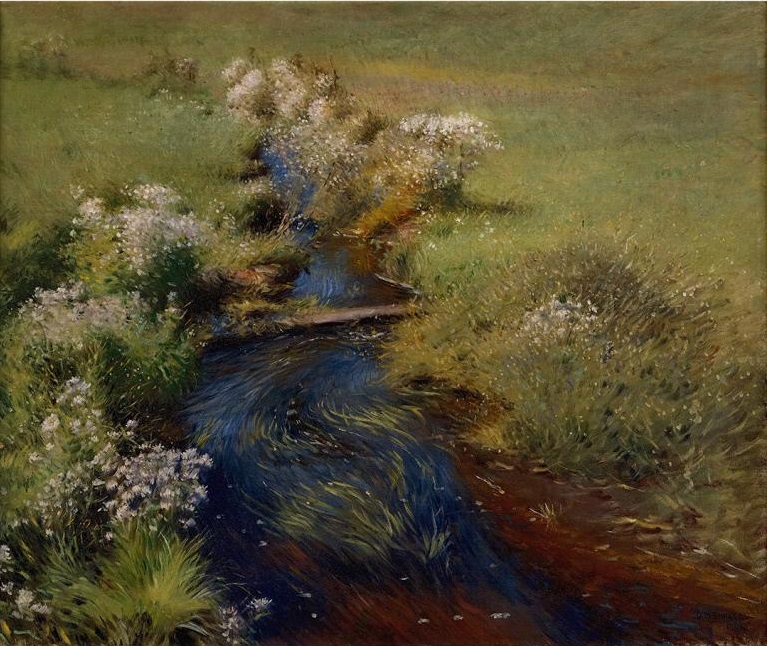Point of view is everything. It isn’t just your position in a room or your distance from an object; it’s the catalyst that actively creates what you experience. What you perceive in artwork is as much a reflection of you than it is the subtle manipulations of its creator. This fact is something you hardly think about, but the moments of when you’re reminded of it stay with you forever.
I had one of those experiences not too long ago. Still within my first week working at the Museum, I found myself haunting the galleries during the waning moments of my lunch break. In front of me was a painting by Dennis Miller Bunker, a work I had already seen several times. Like many, I had been to the Museum long before I worked here. In my previous visits I regarded the painting, took it in as any good patron would, and then moved on.
This time was different though; I was an employee, not a guest. There was no rush to cram in as much experience as possible. I was just standing there, digesting a sandwich. I work in Communications, but still, I felt like a passive caretaker. It was a small shift in my point of view, but its impact was incredible.
I stared at the painting for a good twenty minutes and, as if by some unseen magnetism, found myself being drawn closer and closer. The painting changed, shifting from a picture of a landscape into an orchestration of brush strokes. It was fascinating, the more I looked the more I saw.
Each flick of the brush could be seen, some long, some thin, others little more than dots. I studied them, trying to figure out how the artist did it, how he managed to bring all those chaotic strokes together into one visual symphony. I realized then that the artist had been thinking the same thing, only he’d been looking at a blank canvas.
Sometime in 1888 or 1889, Dennis Miller Bunker had stood where I stood and pondered how he would use little brush strokes to bring a picture to life. His decisions could be seen, every dab of color deliberately placed to describe what the artist was saying. From the artist to me, a connection through time was made, and it made the work seem so much more human. It wasn’t just that I was close to the painting; I’d taken closer looks plenty of times. It was something in the shift, from guest to guardian, which finally opened my eyes to what had always been in front of me. I’ll never forget it.
Truth is we are all guardians of art, it doesn’t matter if we work where it is being shown or if we are just a guest walking the halls. So try changing your point of view next time you’re here, not as a guest but as a passive guardian. Look deeper, you may find more than you ever thought possible.






